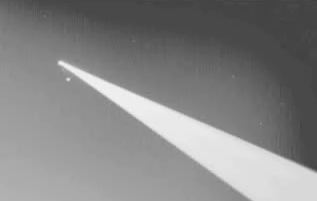Home
A comprehensive resource for safe and responsible laser use
US: Airborne missile-killing laser project mothballed after $5 billion

Cockpit view of the ABL shooting down a missile on Feb. 11 2010. Video is here.
A key reason for the ABL shutdown was the cost of the project versus the projected military returns. Another reason is that the Missile Defense Agency is looking to a new generation of laser systems with “much denser capacity or greater power lasers in smaller packages and operating at much higher altitudes.” Unmanned aerial vehicles would be an ideal platform. The MDA’s director said antimissile drones using solid-state lasers could be a reality by 2020.
From Aviation Week. An analysis of laser weapons is at Strategy Page.
Commentary from LaserPointerSafety.com: We included this story because people sometimes wonder if lasers aimed from the ground can damage an aircraft’s airframe. The short answer is “no”. It would take a system similar to the $5 billion ABL. However, the Missile Defense Agency is now indicating that military-developed solid-state lasers may be able to cause enough damage to down a missile -- or aircraft -- within this decade (the 2010s).
While it is unlikely that non-state groups could deploy such a device, it is more of a possibility than independently developing an ABL-like COIL gas laser. For the foreseeable future, the threat to aircraft remains the visual impairment caused by bright laser light, and to a lesser degree, the possibility of causing retinal lesion eye injuries.
.